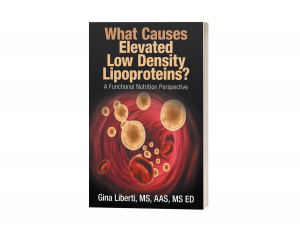Summary
Reimagining Cholesterol: A look at LDL through a functional nutrition lens. Lyn Goot Writers’ Branding LLC email us here Visit us on social media: Instagram Facebook YouTube
Source: Newseria BIZNES

AI News Q&A (Free Content)
Q1: What is hyperlipidemia and how is it commonly treated?
A1: Hyperlipidemia refers to abnormally high levels of lipids or lipoproteins in the blood, which can be due to genetic or acquired factors. It is a significant risk factor for cardiovascular diseases like atherosclerosis. Generally, it requires ongoing medication to control blood lipid levels and can be managed through lifestyle changes such as diet and exercise.
Q2: How does functional nutrition differ from traditional nutritional approaches in managing hyperlipidemia?
A2: Functional nutrition focuses on using food with additional health benefits beyond basic nutrition to manage health conditions like hyperlipidemia. It emphasizes personalized dietary interventions that consider individual health conditions and nutrient metabolism to prevent chronic diseases.
Q3: What recent scientific findings support the use of oat beta-glucan in managing hyperlipidemia?
A3: A study published in 2025 found that oat beta-glucan significantly improved lipid metabolism in both human and animal models, showing potential in managing hyperlipidemia. The compound was shown to reduce LDL cholesterol and improve liver lipid metabolism, suggesting its role in preventing obesity and related metabolic disturbances.
Q4: Can you explain the relationship between LDL cholesterol and atherosclerosis based on recent research?
A4: LDL cholesterol contributes to the formation of atherosclerotic plaques by depositing in artery walls, leading to plaque growth. Recent research has shown that reducing LDL levels and increasing HDL influx can slow plaque progression and even induce regression by promoting cholesterol removal from macrophages in plaques.
Q5: What role do oxidized LDL and oxysterols play in the development of atherosclerosis?
A5: Oxidized LDL and oxysterols, formed through oxidative stress, have proatherogenic effects by causing vascular cell dysfunctions. They contribute to the formation of foam cells and promote inflammation, leading to increased plaque formation and instability. High-density lipoproteins can help mitigate these effects by facilitating the efflux of oxysterols.
Q6: How does Gina Liberti's holistic approach challenge mainstream views on hyperlipidemia?
A6: Gina Liberti advocates for a holistic, science-backed approach to managing hyperlipidemia that integrates functional nutrition and lifestyle changes. Her approach challenges conventional treatments by emphasizing the role of diet and personalized health interventions in managing lipid levels and preventing cardiovascular diseases.
Q7: What are the potential benefits of using functional foods in managing lipid disorders?
A7: Functional foods, which provide health benefits beyond basic nutrition, can play a crucial role in managing lipid disorders by modifying dietary intake to lower cholesterol levels and improve metabolic health. These foods, often enriched with beneficial compounds, can help reduce the risk of cardiovascular diseases associated with hyperlipidemia.
References:
- Eburicoic acid inhibits endothelial cell pyroptosis and retards the development of atherosclerosis through the Keap1/Nrf2/HO-1/ROS pathway
- Oat beta-glucan inhibited obesity in mice though stem cell remodeling
- HDL and plaque regression in a multiphase model of early atherosclerosis
- Oxysterols in Vascular Cells and Role in Atherosclerosis





